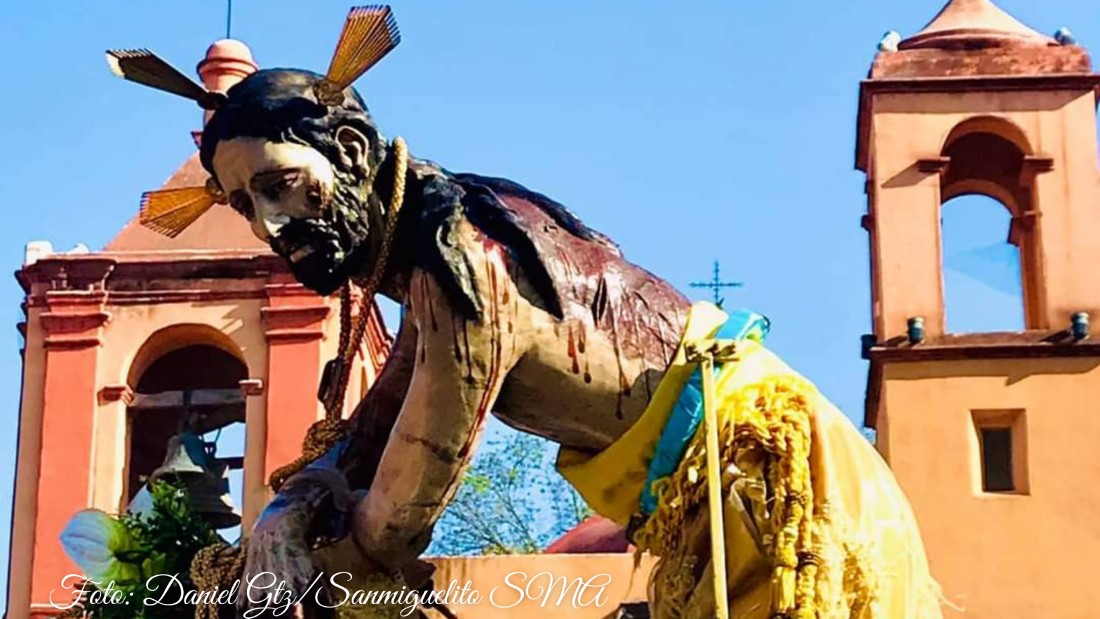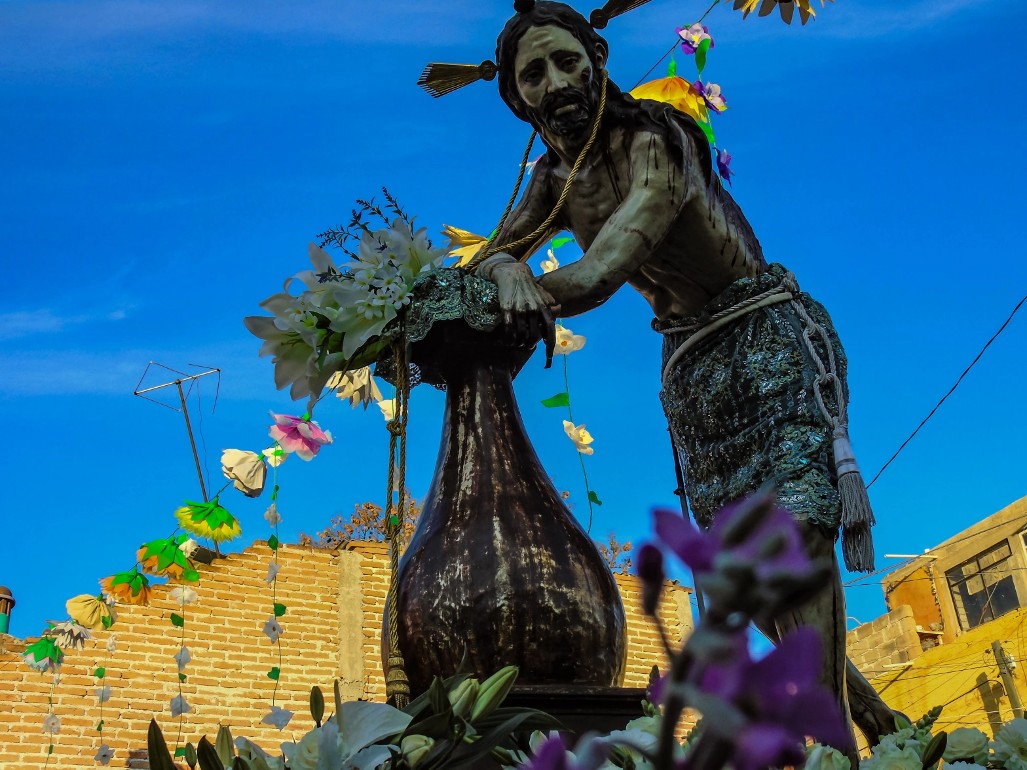
by Mary Jane Miller
The solemn procession, the traditional bringing of the Lord of the Column to San Miguel, will happen on Saturday and Sunday, April 5 and 6. The sculpture of the flagellation of Christ will be carried from the Sanctuary in Atotonilco to San Juan de Dios Church, as it is each year. The tradition dates back to 1823, when a plague was occurring in San Miguel. When the locals decided to bring the statue to town as an offering of prayer, the plague abated.
The image commemorates the biblical text where Pilate took Jesus and had him flogged with 40 lashes (John 19). "The Son of Man is going to be delivered into the hands of men; they will kill him, and three days after his death, he will rise again." (St. Mark 9, 30-37).
The severe flagellation portrayed is a means of identifying with the suffering of Christ. My suggestion here is to imagine that our world is being beaten by humanity. If we can see cruelty in the story of Jesus, perhaps we can see the injustice we have reigned upon the earth and between one another.

In this I mean no disrespect for The Brotherhood of the Lord of the Column. Theirs is a well-established organization devoted to protecting and transporting with reverence this fine sculpture of sacred art. This 200-year-old life-size Jesus was first commissioned by Cayetano Vargas. Father Remigio González later built a second, more realistic, one. In fact, currently there are three life-size images of the Lord of the Column; this one, which visits San Miguel every year; another, which is found in the Holy House of exercises and a third that is venerated in the temple of the Third Order
The ecclesiastical authorization necessary to carry out this massive act is a patronage that takes charge of the organization. Miguel Ángel Ramírez, who is in charge this year, had it handed down into his care by his father, Don Miguel.
The pageant begins Saturday evening at eight o’clock in the sanctuary in Atotonilco, with the images of Jesus, Mary, and Saint John. Silk scarves cover them against the wind and dust during the procession. At eleven o’clock, they leave the temple, receiving the blessing of the parish priest, Father Fernando Manríquez Cortés. Then the procession begins.

The pilgrims should arrive at Los Alambres stream (Santa Margarita Ranch) at one in the morning. A little before two, they will arrive at the Cruz del Perdón Chapel, where Father Fernando will officiate. A mass and the procession will continue, calculated to arrive at the Arroyo de la Arena at six. At seven, they arrive at the Avenida Independencia. Then the hundreds of people will be waiting for them will witness the moment in which the canvases that covered them are removed.
"Death has been absorbed into victory. Death, where is your victory? Death, where is thy sting "
From an historical account of the very first procession by Don Franco Barajas: